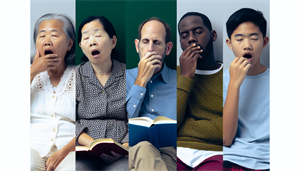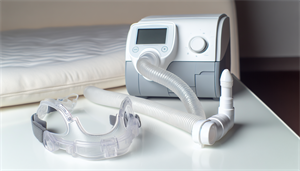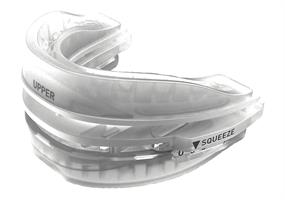Sleep apnea looms as a silent epidemic, disrupting the slumber of nearly a billion people worldwide and posing serious health threats if left untreated. But what is sleep apnea, and how many people have sleep apnea? Understanding this condition and its prevalence is crucial for raising awareness and addressing the potential health risks it poses.
Key Takeaways
-
Sleep apnea affects nearly one billion individuals globally, but a significant number of these cases go undiagnosed, highlighting a need for greater awareness and medical attention.
-
Risk factors for developing sleep apnea include age, gender, obesity, smoking, and alcohol consumption, with elderly men and those with certain chronic illnesses being more prone to the condition.
-
Treating sleep apnea is crucial to prevent serious health risks such as cardiovascular disease and to improve quality of life, with positive airway pressure therapy (PAP) being an effective treatment option.
Global Prevalence of Sleep Apnea

Sleep apnea, including severe sleep apnea, is a pervasive sleep disorder that impacts nearly one billion individuals globally. Its sleep apnea symptoms, such as snoring, gasping, and choking during sleep, are more than just bothersome - they’re signs of a hidden health crisis.
The fact that up to 936 million adults worldwide are impacted by this common sleep disorder underscores the importance of sleep medicine in resolving this widespread issue. Health experts are deeply concerned about sleep apnea due to its increasing prevalence and potential impact on health, as well as the variety of factors that can cause individuals to develop this condition.
North America
In North America alone, over 30 million people grapple with sleep apnea. This figure includes those who experience sleep disordered breathing, a key symptom of this condition. However, despite the high prevalence, only about 6 million Americans have received a medical diagnosis of sleep apnea.
An estimated 30 million people suffer from undiagnosed sleep apnea, demonstrating that while sleep apnea is common in the region, it often goes unnoticed.
Europe
Europe too faces the challenge of a growing sleep apnea epidemic. Roughly 175 million Europeans are affected by obstructive sleep apnea. Many of these individuals develop sleep apnea and benefit from continuous positive airway pressure (CPAP) therapy as a treatment option, underscoring the need for more awareness and diagnosis.
The prevalence of sleep apnea varies significantly across European countries. Notably, the countries reporting higher rates of this sleep disorder include:
-
Russia
-
Germany
-
France
-
Ukraine
-
Spain
The occurrence of sleep apnea in Europe has shown a consistent increase over the past decade, making it a significant sleep disorder that requires attention and treatment.
Asia-Pacific
The Asia-Pacific region, too, faces an increasing number of sleep apnea cases. Here, the prevalence of sleep apnea varies dramatically, ranging from 3.7% to 97.3%, with many individuals remaining undiagnosed or untreated. Rising obesity rates, cardiovascular disease, and metabolic syndrome, among others, contribute to this increase.
Changes in lifestyle, such as alterations in nutrition and diet due to economic growth, contribute to a rise in obesity, which is a recognized risk factor for sleep apnea.
Demographics and Risk Factors

Although sleep apnea can impact anyone, some demographics are more vulnerable than others. Age, gender, and weight, for instance, have a significant influence on the likelihood of developing sleep apnea. Non-biological factors that can increase the risk of developing this condition include:
-
Smoking
-
Alcohol consumption
-
Obesity
-
Hypothyroidism
Certain demographic groups, including elderly men, certain racial groups, and individuals with chronic illnesses, are more prone to sleep apnea.
Age and Sleep Apnea
Age significantly influences the prevalence of sleep apnea. Older adults, particularly those between the ages of 30 to 70, are at higher risk. For instance, among individuals aged 65 and older, 56% are at high risk of developing obstructive sleep apnea.
The occurrence of sleep apnea tends to increase with age, with older men and women being more likely to be affected.
Gender Differences
Gender also affects the occurrence of sleep apnea. Here are some key points:
-
Men, in particular, are more likely to suffer from sleep apnea than women.
-
This disparity is most pronounced in the 30 to 49 age group, where men are four times more likely to have sleep apnea.
-
However, the gender gap narrows in the 50 to 70 age group, with men only twice as likely as women to have the condition.
For women, the risk of sleep apnea often rises after menopause. Also, women with polycystic ovarian syndrome (PCOS) are more susceptible to developing sleep apnea due to factors like obesity and impaired quality of life.
Lifestyle Habits
Certain lifestyle habits can lead to the development of sleep apnea. Obesity, for instance, can lead to an accumulation of excess tissue in the airway, causing narrowing that can contribute to sleep apnea. Likewise, alcohol consumption can result in sleep apnea by causing relaxation of the throat muscles, leading to potential obstructions and disrupted breathing patterns while asleep.
Smoking, alcohol consumption, and obesity are all lifestyle factors that can lead to poor sleep and the development of sleep disorders, including this specific sleep disorder.
Diagnosing Sleep Apnea

Diagnosing sleep apnea typically involves a combination of sleep studies, consultations with healthcare providers, and various tests to determine the severity of the condition. The two widely employed tests for assessing sleep apnea are Polysomnography and Multiple Sleep Latency Test (MSLT). The Apnea-Hypopnea Index (AHI), which quantifies the frequency of breathing cessation or reduction during sleep, is a crucial metric in diagnosing sleep apnea.
However, home sleep apnea testing yields false negative results about 15% of the time, especially for individuals with mild sleep apnea or milder symptoms.
Types of Sleep Apnea
There are three primary types of sleep apnea:
-
Obstructive Sleep Apnea (OSA): characterized by a blockage or narrowing of the airway during sleep, resulting in interruptions in breathing.
-
Central Sleep Apnea (CSA): characterized by a failure of the brain to signal the muscles to breathe during sleep.
-
Complex Sleep Apnea Syndrome (CoSA): a combination of both obstructive and central sleep apnea.
Central Sleep Apnea is characterized by a lack of appropriate signals from the brain to the muscles that control breathing, resulting in disrupted breathing patterns during sleep. Complex Sleep Apnea Syndrome is a blend of obstructive and central sleep apnea, in which central apneas continue or arise during or after treatment for obstructive events.
Health Risks Associated with Untreated Sleep Apnea
Leaving sleep apnea untreated can lead to serious health risks. These include elevated blood pressure, cardiovascular disease, stroke, diabetes, and mental health complications.
For instance, untreated sleep apnea is linked to high blood pressure, as it can lead to airway blockages that increase the workload of the heart in pumping blood. This can impact both nocturnal and diurnal blood pressure readings, but addressing sleep apnea may assist in lowering these levels.
Treatment Options for Sleep Apnea

Various treatment options exist for treating sleep apnea, ranging from lifestyle changes to medical interventions. One such sleep apnea treatment is positive airway pressure therapy (PAP therapy), which uses a column of pressured air to maintain an open airway. CPAP therapy, a type of PAP therapy, is a highly effective intervention for obstructive sleep apnea (OSA) that can improve sleep quality and control blood pressure. Other treatment options include:
-
Oral appliances
-
Weight loss
-
Positional therapy
-
Surgery
It is important to consult with a healthcare professional to determine the most appropriate treatment option for your specific condition.
Apart from CPAP therapy, other treatment options include oral appliance therapy, which supports the muscles in the back of the throat to reduce the likelihood of collapse, and lifestyle modifications like adopting a heart-healthy diet, managing weight, quitting smoking, and limiting alcohol intake.
The Importance of Seeking Treatment

Seeking treatment for sleep apnea is of utmost importance as it helps prevent a range of health complications, including coronary artery disease, heart attack, and stroke. It also enhances the overall quality of life of the individual. Primary care physicians, pulmonologists, cardiologists, mental health professionals, and neurologists are among the qualified healthcare providers who can diagnose and provide treatment for sleep apnea.
Benefits of seeking treatment for sleep apnea encompass improved sleep, increased energy, better mood, improved cognitive function, reduced health risks, leading to a better overall quality of life.
Summary
In conclusion, understanding and addressing sleep apnea is of utmost importance given its prevalence and potential impact on health. By recognizing the risk factors, seeking diagnosis, and pursuing appropriate treatment, it’s possible to manage sleep apnea effectively and enhance one’s quality of life.
Frequently Asked Questions
What percent of the population has sleep apnea?
Roughly 6.62% of the American population is estimated to have sleep apnea, affecting about 1 in every 15 Americans.
How many years can you live with sleep apnea?
Untreated obstructive sleep apnea can shorten your life by 12-15 years, but diagnosis and treatment can alleviate its effects.
Can sleep apnea go away?
Unfortunately, sleep apnea is a chronic condition that cannot be cured entirely. However, the symptoms can be treated with therapy and lifestyle changes to lessen its impact.
What is sleep apnea?
Sleep apnea is a sleep disorder marked by pauses in breathing or shallow breathing during sleep. It can lead to serious health issues if left untreated.
Who is more susceptible to developing sleep apnea?
Older adults, especially those between 30 to 70 years old, and men are more susceptible to developing sleep apnea, as are individuals with certain lifestyle habits like smoking, alcohol consumption, and obesity. It's important to be aware of these risk factors and seek medical advice if necessary.


